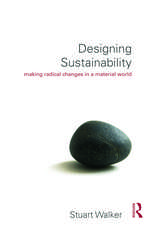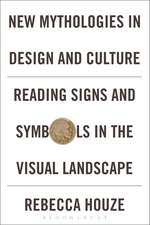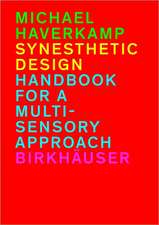Design Culture: Objects and Approaches
Editat de Guy Julier, Mads Nygaard Folkmann, Niels Peter Skou, Hans-Christian Jensen, Anders V. Munchen Limba Engleză Paperback – 24 feb 2021
| Toate formatele și edițiile | Preț | Express |
|---|---|---|
| Paperback (1) | 173.62 lei 3-5 săpt. | |
| Bloomsbury Publishing – 24 feb 2021 | 173.62 lei 3-5 săpt. | |
| Hardback (1) | 660.15 lei 6-8 săpt. | |
| Bloomsbury Publishing – 20 feb 2019 | 660.15 lei 6-8 săpt. |
Preț: 173.62 lei
Preț vechi: 200.80 lei
-14% Nou
Puncte Express: 260
Preț estimativ în valută:
33.23€ • 34.43$ • 27.73£
33.23€ • 34.43$ • 27.73£
Carte disponibilă
Livrare economică 01-15 martie
Preluare comenzi: 021 569.72.76
Specificații
ISBN-13: 9781350196544
ISBN-10: 1350196541
Pagini: 248
Ilustrații: 27 bw illus
Dimensiuni: 156 x 234 x 18 mm
Greutate: 0.41 kg
Editura: Bloomsbury Publishing
Colecția Bloomsbury Visual Arts
Locul publicării:London, United Kingdom
ISBN-10: 1350196541
Pagini: 248
Ilustrații: 27 bw illus
Dimensiuni: 156 x 234 x 18 mm
Greutate: 0.41 kg
Editura: Bloomsbury Publishing
Colecția Bloomsbury Visual Arts
Locul publicării:London, United Kingdom
Caracteristici
Editors and contributors are leading figures in design studies and design history
Notă biografică
Guy Julier is Professor of Design Culture at the University of Brighton and the Victoria and Albert Museum, UK.Anders V. Munch is Professor of Design Culture at the University of Southern Denmark.Mads Nygaard Folkmann is Associate Professor of Design Theory, Culture and History at the University of Southern Denmark.Hans-Christian Jensen is Associate Professor of Design Studies, Culture and Management at the University of Southern Denmark.Niels Peter Skou is Lecturer in the History of Ideas and Music at the University of Southern Denmark.
Cuprins
Introducing Design Culture Section 1: Developing Design CultureIntroductionDesign Culturing: Making Design History Matter, Kjetil FallanTaste and Attunement: Design Culture as World Making, Ben HighmoreEmbedding Design in the Organisational Culture: Challenges and Perspectives, Alessandro Deserti and Francesca RizzoUse in Design Culture, Toke Riis EbbesenSection 2: Addressing Market and SocietyIntroductionA Brand for Everyone, Sara Kristoffersson Buying into the Future: A Case Study of a Danish Brand of Fashionable Children's Clothing, Trine Brun PetersenThe Glowing Black of fritz-kola. Aestheticisation in Design Culture, Mads Nygaard FolkmannSection 3: Positioning Design ProfessionsIntroduction Design Culture in the Sex Toy Industry: a new phenomenon, Judith GloverWorking from Home: Fashioning the Professional Designer in Britain, Leah ArmstrongOn the Professional and Everyday Design of Graphic Artifacts, Sarah OwensThe Fixing I: Repair as Prefigurative Politics, Gabriele OropalloSection 4: Locating Design CultureIntroduction Something Old, Something New, Something Borrowed: Relocating Kähler's brand heritage, Niels Peter SkouPerforming Turkish Design in Products, Collections and Exhibitions: Expanding the Archive, Seeking Depth, Harun KayganA Theoretical Straddle: Design Culture between National Structures and Transnational Networks, Joana Ozorio de Almeida Meroz and Katarina SerulusThe Challenges and Opportunities of introducing Design Culture in Jordan, Danah AbdullaEpilogue: Design Culture as PracticeIndex
Recenzii
Offers the reader an excellent deep dive into the concepts of design culturing in a very accessible way ... Overall this authoritative book instills a great sense of the many attributes and values of design culture.
Reinvigorates the study of design by offering an alternative to other cross-disciplinary terms such as 'design studies' or 'design thinking'.
This stimulating introduction to the approaches and ideas which inform design culture should do much to promote new ways of thinking about both design and culture, and the dialectic between them.
Design Culture is an essential contribution to the field of design studies. It addresses the ubiquity of the term 'design' from a cross sectional perspective, while introducing a precise, conceptual and methodological focus.
A stimulating, must-read overview of the interdisciplinary debates around Design Culture as a discipline and object of study for all those interested in the phenomenon of Design.
Design Culture manages to break through the noise, providing an enlightening view of design as a dominating feature of everyday life. From the influence of Turkish paper doilies to the rise of the global sex toy industry, it gives a multi-layered account of seemingly insignificant designs. Filled as it is with impressive philosophical insights and amusing historical connections, Design Culture offers much to ponder. Indeed, designers, historians as well as many non-specialists will find this book both enriching and enjoyable.
Designers often claim they seek to "improve or maintain the habitability of the world of their fellow citizen". Design Culture may well be the appropriate theoretical framework I am longing for to better understand and explain what "habitability" is about.
Reinvigorates the study of design by offering an alternative to other cross-disciplinary terms such as 'design studies' or 'design thinking'.
This stimulating introduction to the approaches and ideas which inform design culture should do much to promote new ways of thinking about both design and culture, and the dialectic between them.
Design Culture is an essential contribution to the field of design studies. It addresses the ubiquity of the term 'design' from a cross sectional perspective, while introducing a precise, conceptual and methodological focus.
A stimulating, must-read overview of the interdisciplinary debates around Design Culture as a discipline and object of study for all those interested in the phenomenon of Design.
Design Culture manages to break through the noise, providing an enlightening view of design as a dominating feature of everyday life. From the influence of Turkish paper doilies to the rise of the global sex toy industry, it gives a multi-layered account of seemingly insignificant designs. Filled as it is with impressive philosophical insights and amusing historical connections, Design Culture offers much to ponder. Indeed, designers, historians as well as many non-specialists will find this book both enriching and enjoyable.
Designers often claim they seek to "improve or maintain the habitability of the world of their fellow citizen". Design Culture may well be the appropriate theoretical framework I am longing for to better understand and explain what "habitability" is about.













